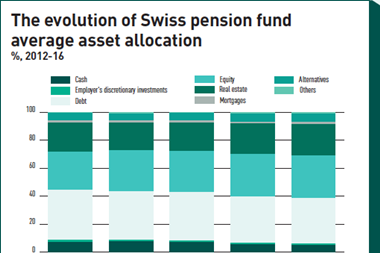Hedge funds have a “considerable” liquidity buffer on an aggregate level with which to manage investor redemptions, according to a survey by the International Organization of Securities Commissions (IOSCO).
However, the organisation’s fourth biannual survey of the sector reported that there may still be liquidity mismatches in underlying funds.
IOSCO said the survey data suggested that, in normal market conditions, hedge funds should be able to meet investor redemptions through the orderly liquidation of assets. This was because at an aggregate level portfolio liquidity exceeded investor liquidity by a wide margin across different time periods (see graph, below).
“That aggregate view may provide some comfort at a systemic level, but it would not necessarily highlight liquidity mismatches within the underlying funds that make up this aggregate,” added IOSCO.
As of 30 September last year, 3.8% ($121.6bn, or €108.3bn) of hedge fund assets had constrained investor redemptions through the use of liquidity management tools, such as gates, suspensions, or side pockets.
Average hedge fund liquidity profile
Assets managed by hedge funds increased by 24% between September 2014 and 2016, according to the survey. As at the end of September 2016, global assets under management stood at $3.2trn.
The increase could reflect a combination of more widespread reporting across jurisdictions, market performance, and net fund subscriptions, but this was not conclusive from the data, IOSCO said.
Other key findings included that the Cayman Islands continued to be the fund domicile of choice with more than half of hedge fund assets based there. Equity long/short was the most widely used investment strategy, followed by global macro and fixed income arbitrage.
IOSCO also noted that a prominent trend in Europe in recent years was the emergence and growth of “liquid alternative funds”, which pursue similar strategies to hedge funds but offer daily or weekly redemption terms to investors.
Generally structured as UCITS, these funds had grown in number and in total assets. According to data from Morningstar, for example, there were some 1,500 liquid alternatives funds in the EU in 2016, compared with 1,000 in 2014.
The survey, which was first carried out in 2010, has become an important resource for regulators given a lack of public and global data on hedge fund activities, said the Madrid-based standard setter. It noted that data collection had expanded due to enhanced regulatory reporting regimes in some jurisdictions and fewer legal constraints around the use and sharing of data.
The report can be found here.












